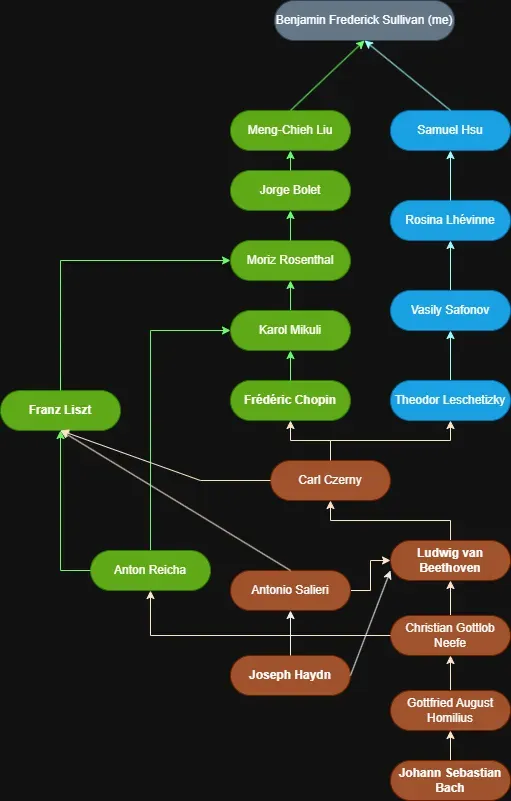Embarking on the journey of purchasing a digital piano brings with it the excitement of adding music to your life, accompanied by the challenge of navigating the financial investment. This comprehensive guide is designed to illuminate the path through various consumer financing options available for digital piano enthusiasts. From straightforward payment plans to rent-to-own schemes, no credit check options, and solutions for those with bad or poor credit, our aim is to equip you with the knowledge to make an informed decision that harmonizes with your budget and musical aspirations.
Payment Plans
When you're ready to bring a digital piano into your home, navigating the cost is a major consideration. Payment plans offer a practical solution, breaking down the barrier of a large upfront payment by spreading the cost over time. This approach not only makes digital pianos more accessible but also manageable within a wide range of budgets.
Pros and Cons of Payment Plan Financing
Let's examine the advantages and drawbacks of opting for a payment plan when financing your digital piano purchase.
| Advantages (Pros) | Drawbacks (Cons) |
|---|---|
| Makes high-quality instruments accessible by allowing customers to spread the cost over time, making it easier to fit into a monthly budget. | Credit requirements can be a barrier for some, as good credit may be needed to qualify for the best terms. |
| Budget-friendly with predictable monthly payments that can help with financial planning. | Long-term commitment means you'll be making payments for the duration of the agreement, which could be several years. |
| Low or no interest rates are often available, making this a cost-effective option over time. | Risk of overpaying if the plan includes high-interest rates after an initial promotional period. |
Navigating Payment Plan Options
Choosing the right payment plan involves several key considerations:
- Interest Rates: Look for plans with the most favorable interest rates to minimize additional costs.
- Payment Flexibility: Some plans offer flexibility in payment amounts and due dates, which can be beneficial.
- Early Repayment: Check if there are penalties for early repayment, which could affect your ability to pay off the plan sooner if your financial situation improves.
Payment Plan vs. Lump Sum
To illustrate the impact of choosing a payment plan versus paying in full upfront, consider the following simple comparison.
| Financing Option | Initial Cost | Monthly Payment | Total Cost |
|---|---|---|---|
| Outright Purchase | $1,500 | N/A | $1,500 |
| Payment Plan | $0 | $130 x 12 months | $1,560 |
Our Take on Payment Plans
Payment plan financing is a flexible and accessible way to purchase a digital piano, making it easier for individuals to invest in their musical journey without the burden of a significant one-time expense. By carefully considering the terms and conditions of various payment plans, you can select an option that best aligns with your financial situation and goals.
Rent-to-Own
Rent-to-Own (RTO) financing offers a unique opportunity for music enthusiasts to start playing a digital piano immediately, with the option to purchase it over time. This arrangement is especially appealing for those who are not ready to commit to a full purchase or are exploring different digital piano models.
Pros and Cons of Rent-to-Own Financing
Exploring the benefits and limitations of the Rent-to-Own financing model can help you decide if it's the right option for you.
| Advantages (Pros) | Drawbacks (Cons) |
|---|---|
| Immediate access to the instrument without a large upfront payment, making it easier to start learning and playing right away. | Higher overall costs due to added fees and potentially higher interest rates over the rental period. |
| Flexibility to return the instrument if it no longer meets your needs or if your financial situation changes. | Monthly payments may contribute less towards ownership than anticipated, extending the time to full ownership. |
| Option to apply rental payments towards purchase, offering a path to ownership that adjusts to your financial capability and commitment level. | Potential for additional fees, such as maintenance or late payment fees, increasing the total cost. |
Considering Rent-to-Own
When evaluating a Rent-to-Own agreement, it's important to consider:
- Total Cost of Ownership: Calculate the total cost you'll pay by the end of the rental period to see how it compares to buying the piano outright.
- Rental Terms: Understand the terms of your rental agreement, including payment schedules, maintenance responsibilities, and options for early purchase.
- Instrument Selection: Consider whether the available selection of digital pianos meets your needs and preferences, as not all models may be available through RTO plans.
Rent-to-Own vs. Outright Purchase
To compare Rent-to-Own with an outright purchase, let's visualize the cost breakdown.
| Financing Option | Initial Cost | Monthly Payment | Total Cost |
|---|---|---|---|
| Outright Purchase | $1,500 | N/A | $1,500 |
| Rent-to-Own | $0 | $50 x 36 months | $1,800 |
Our Take on Rent to Own
Rent-to-Own financing is an attractive option for those seeking flexibility and immediate access to a digital piano without the hefty upfront cost. It's crucial, however, to carefully review the agreement's terms and consider the total cost of ownership when choosing this financing route. By doing so, you can enjoy the benefits of playing and potentially owning a digital piano while aligning with your financial goals and capabilities.
No Credit Check Financing
Navigating the path to owning a digital piano involves considering various financing options, especially for those cautious about credit inquiries. No credit check financing stands out as a beacon for individuals looking to avoid impacting their credit score. This installment dives into the advantages and disadvantages of these financing options, ensuring you can strike the right chord with your financial decisions.
Pros and Cons of No Credit Check Financing
Understanding the positives and negatives of using no credit check financing to purchase a digital piano can help you make an informed decision.
| Advantages (Pros) | Drawbacks (Cons) |
|---|---|
| Accessibility for all credit types - Ideal for individuals with less-than-perfect credit, or those who wish to avoid a hard credit inquiry. | Higher costs - Often comes with higher interest rates or fees to offset the risk to the lender. |
| Quick approval process - Simplified verification processes lead to faster approval, making it easier to acquire a digital piano sooner. | Smaller loan amounts - You may find that the amount you can finance is lower, given the increased risk to the lender. |
| Improves credit score - For some, using these financing options responsibly can help build or improve a credit score, assuming the lender reports payments to credit bureaus. | Less favorable terms - Terms and conditions may be less consumer-friendly, including shorter repayment periods and higher fees. |
Understanding No Credit Check Financing
No credit check financing allows individuals to purchase digital pianos without undergoing a traditional credit inquiry. This option is particularly appealing for those with poor or no credit history. However, it's important to scrutinize the details of these financing plans, as they can vary significantly between lenders.
Key Considerations
When exploring no credit check financing options, it’s crucial to keep the following in mind:
- Interest Rates and Fees: These can be substantially higher than traditional financing options, reflecting the lender's increased risk.
- Repayment Terms: Often more stringent, with shorter durations and less flexibility in payment schedules.
- Lender Reputation: Investigate the lender's reputation and customer feedback to avoid potential pitfalls.
No Credit Check vs. Traditional Financing
Let’s compare no credit check financing to traditional financing with a focus on cost implications.
| Financing Option | Interest Rate | Repayment Period |
|---|---|---|
| Traditional Financing | 5-10% (varies) | Up to 36 months |
| No Credit Check | Can exceed 20% | 12-24 months |
Our Take on No Credit Check Financing
No credit check financing options offer a pathway to digital piano ownership for those concerned about credit inquiries or with less-than-ideal credit histories. While this option opens doors, the associated costs and terms require careful consideration. By weighing the pros and cons and diligently reviewing the terms of financing, aspiring piano owners can make informed decisions that resonate with their financial and musical goals.
Financing Options for Bad or Poor Credit
For music enthusiasts dreaming of owning a digital piano but facing the challenges of bad or poor credit, finding a suitable financing option might seem daunting. However, the market offers several avenues specifically designed to accommodate a wide range of financial situations. Lets take a look at the financing options available for individuals with less-than-ideal credit scores, laying out the pros and cons to help you make the right choice.
| Advantages (Pros) | Drawbacks (Cons) |
|---|---|
| Broader accessibility - Designed to cater to those with bad or poor credit, these options open doors that might otherwise remain closed. | Higher interest rates - To offset the risk, lenders typically charge higher interest rates compared to standard financing options. |
| Opportunity for credit improvement - Making timely payments can contribute to improving your credit score, provided the lender reports to credit bureaus. | Possible upfront fees - Some financing options might require an initial deposit or administrative fees. |
| Varied options - From secured loans to retailer financing plans, there are several pathways to explore, each with its own set of terms and benefits. | Stricter terms - Terms may include shorter repayment periods and less flexibility in payment adjustments. |
Exploring Bad or Poor Credit Financing Options
For individuals navigating the realm of bad or poor credit, various financing strategies can be considered, each with unique features and requirements:
- Secured Loans: These require collateral but often come with lower interest rates.
- Co-signer Loans: Having a co-signer with better credit can improve terms and reduce costs.
- Retailer Financing Plans: Some digital piano retailers offer in-house financing that may be more lenient towards credit history.
Key Considerations
Engaging with financing options for bad or poor credit necessitates a careful approach:
- Read the Fine Print: Understanding all terms and conditions is crucial to avoid unfavorable surprises.
- Compare Options: Not all financing plans are created equal. It's vital to compare different options to find the most suitable one.
- Plan Your Budget: Ensure that the repayment plan aligns with your financial capacity to avoid exacerbating credit issues.
Secured vs. Unsecured Financing
To provide a clearer picture, let's compare the typical characteristics of secured and unsecured financing options for those with bad credit.
| Financing Type | Interest Rate | Requirements |
|---|---|---|
| Secured Financing | Lower | Collateral required |
| Unsecured Financing | Higher | No collateral required |
Our Takeaway on Financing for People with Poor or Bad Credit
While challenges exist for individuals with bad or poor credit seeking to finance a digital piano, various options are available to facilitate this goal. By carefully evaluating the pros and cons and considering one's financial situation, it becomes possible to navigate these hurdles successfully. Ultimately, the right financing choice can pave the way to not only acquiring a beloved instrument but also potentially improving one’s credit score.








